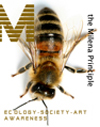
Trees: a conversation? > >
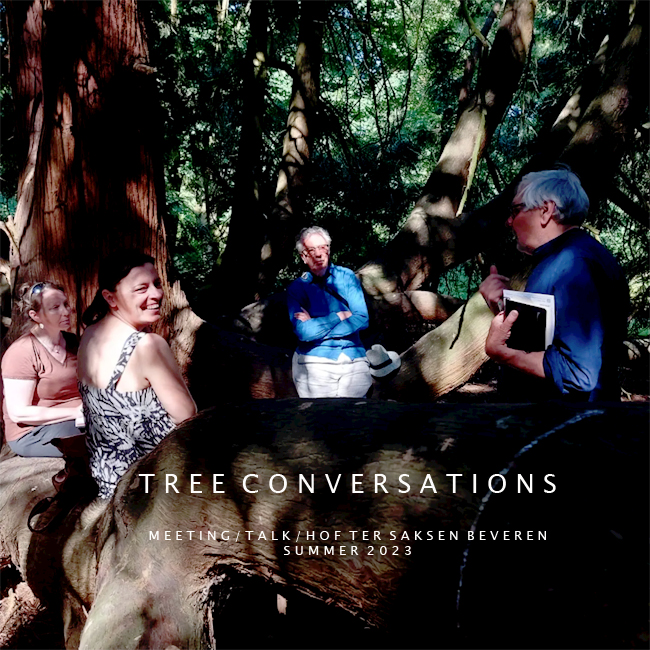
[ an ongoing process of talks, workshops, experiences, letters...]
![]()
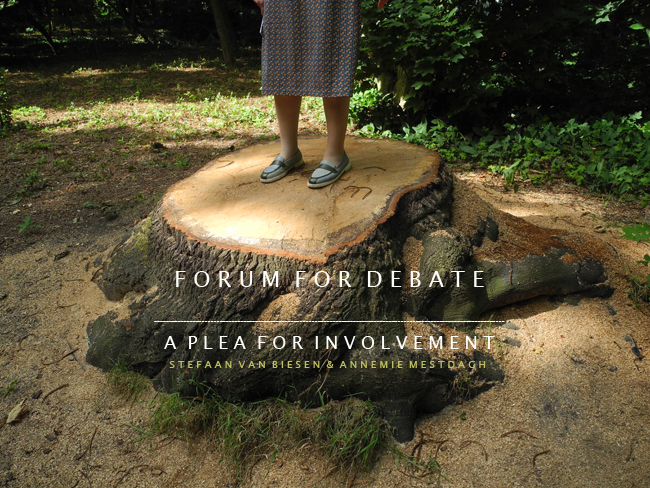
History of actions and relations with trees
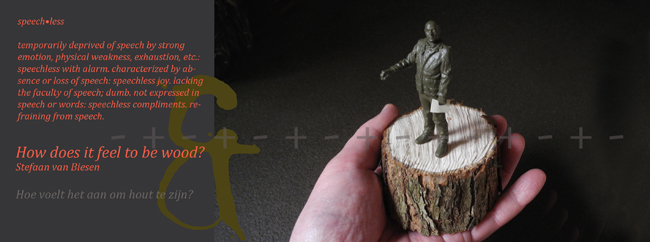
Method I: broadly documented walks > research in the urban human space > walks as a sensory experience > which through documentation have a scientific and aesthetic layer.
In 2005 Ingrid Pee (former assitant of Joseph Beuys during the 7000 Oak project in Kassel Documenta Germany) introduced us to the concept of 'Spaziergangwissenschaft', which was introduced in the 1990s at the University of Kassel, Germany, by the Swiss sociologist and urbanologist Lucius Burckhardt (1925-2003). Walking elevated to an observing stimulus in relation to space. It perfectly matched with my work and way of thinking. It was a revelation and it gave a nice feeling to see that my work fit in with an artistic tradition, a large family of predecessors.
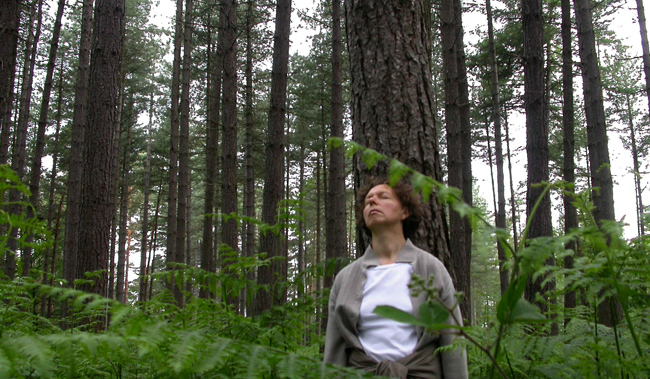
Method II: between 2000 and 2004 > members of 'Bewust Wandelen' [Walking Consciously] > the concept of geomancy > a small alternative group of artists, writers and therapists, under the inspired wings of Kris Tolomei, who regularly organized lectures and walks at energetic places in Belgium and Holland.
Photo: Annemie Mestdagh during a sensorial walk in the Zoniënwoud near Brussels with a large group organized by Joel Libert.
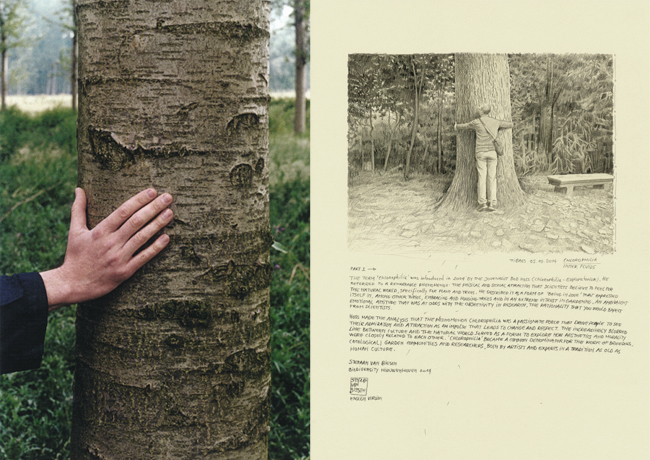
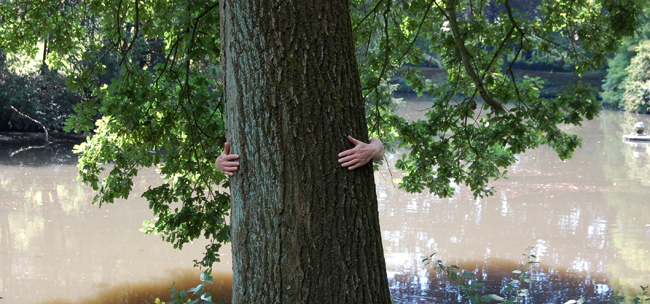
Axis Mundi. [1993] During the walks we embraced trees. We also stood on the remains of shopped off trees as an ecological comment, a small natural 'speakers stage' > so holding a speech or reading a letter. Trying to imagine how the tree looked like when he was whole. To be aware, trying to feel and to become the tree, imagine his presence and energy. Photo: Hof Ter Saksen Beveren Belgium [embracing trees].
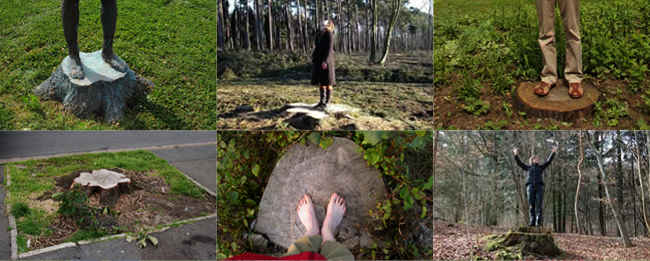
![]()
[Mulberry Tree Walk] a portabel museum box about a social project Sint-Niklaas Belgium 2023.
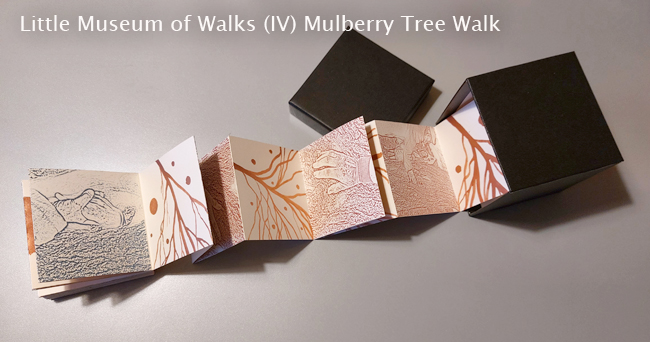
Johan De Vos (writer):
"It was wonderful to experience that moment. The mulberry in the Brouwershof park on Hazewindstraat automatically takes on the allure of a memorial tree, because it is what it is. Rather old, a little crooked, with ailments like those of aged men, but still full of life. It is surrounded by social housing, the Turkish mosque and the still standing tower of the "standing seesaw" in Pastoor De Meerleerstraat. We then know that Christiane Thijs (1943-1988 asbestos victim) still knew that tree. It is the tree of the hope, life and beauty. Thanks to Stefaan Van Biesen, who reads one of his 'letters to trees' standing by that tree".
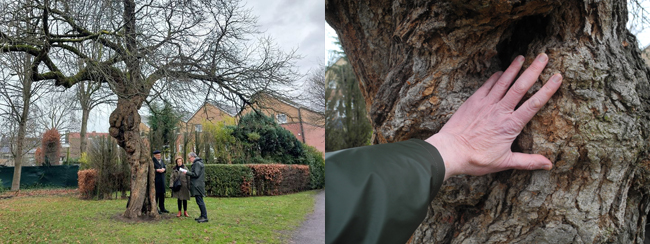
Koen Van Synghel (architect and critic): aaaagh, the Mulberry.
Tree Cult in Turkisch Culture and Mulberry Tree
"Determination of the elements which belong to the nature and the transference of various motifs to future generations are important for the Turks for preserving cultural values. One of the elements in the center of life is tree which is as essential as water, air, soil from the occurrence of the universe. First of all, tree represents the existence, the life, vitality and fertility. Many different roles are given to tree in Turkish and World cultures in history. In the first periods of ancient Turks, the sanctity which is attributed to various natural elements and to tree among them is in the way of praying to it. In that period, binding to the various natural elements in a religious-mystical sense brought about “cults”

One of the trees that sanctity is attributed to in tree cult is mulberry tree. Mulberry tree which is called the spirit of the house is also the symbol of the peace of house, future and abundance. In Turkish traditional structure, before laying the foundation of the house, planting of fruit trees around has been given priority. Planting of mulberry tree whose edge is burned and which is threw by Ahmet Yesevi in Velayetname of Haci Bektas Veli in front of Dergah of Haci Bektas Veli and making wish by tying cloth to the boughs of mulberry tree gives sanctity to the tree. This issue has especially gained importance in Alevi Bektashi tradition and has survived with various rituals until today.”
![]()
Educational travelling School exhibition Rasa 'I am a tree / Ik ben een boom' 1997.
Rasa Art Education feels nostalgic. #rasacreëert Retrospect: 'I am a tree/ Ik ben een boom'' expo 1997.
Watch the video:
Can a tree be your friend? Can trees feel? Do we need trees? Myths and rituals tell how important trees are to humans and how the tree transmits life in a continuous cycle. With work by ecologically involved artists such as Denmark, Wilfried Genard, Wladimir Moszowski, Kris Vanhemelryck, Sara Stoop, Stefaan van Biesen and Jo Bracke.

[S O N & H E I R] 2 0 1 9 .
M O N O L I T H
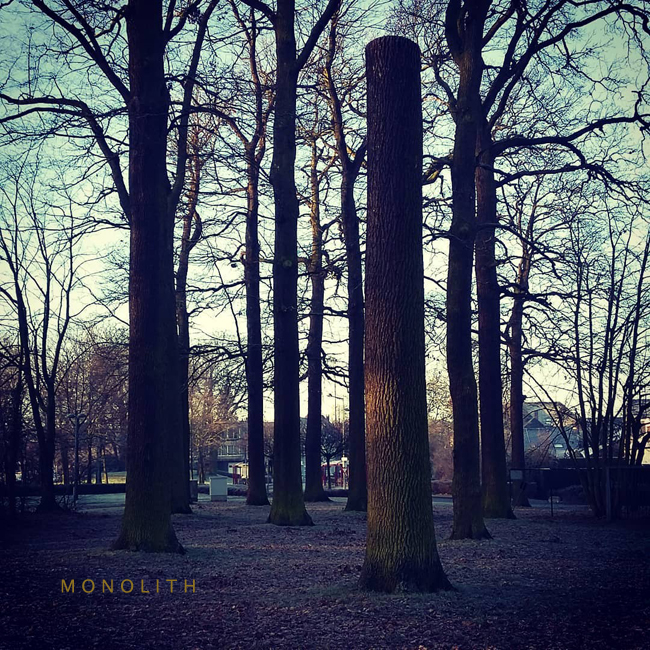
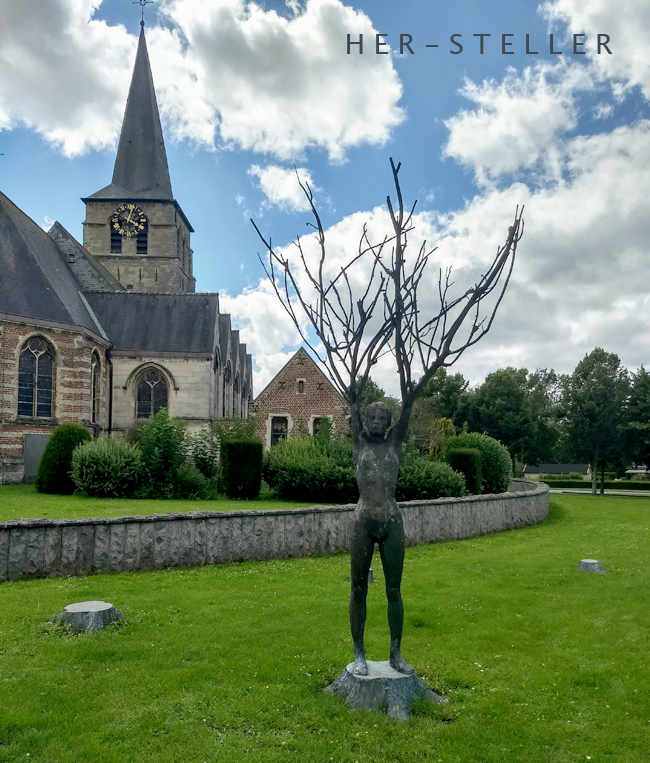
H E R - S T E L L E R / R E P L A C E R [ 2 0 0 6 ] .
Sculpture public space [Thuis voor een Beeld, Provincie Oost-Vlaanderen] Massemen Wetteren Belgium. Starting form performances with friends, the act of standing on the remains of trees, considered as a 'speakers corner', became a sculpture.
S K I N O N S K I N [VII]

Le Cateau France.
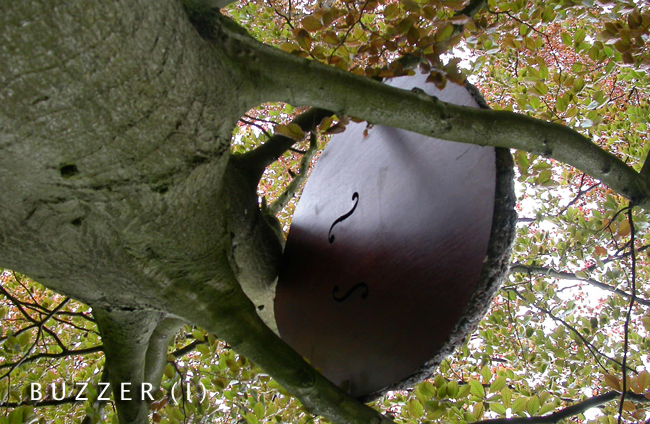
B U Z Z E R ( I ) [ 2 0 0 3 ] .
In situ installation Beeldig Hof Ter Saksen CC Ter Vesten Beveren Belgium.
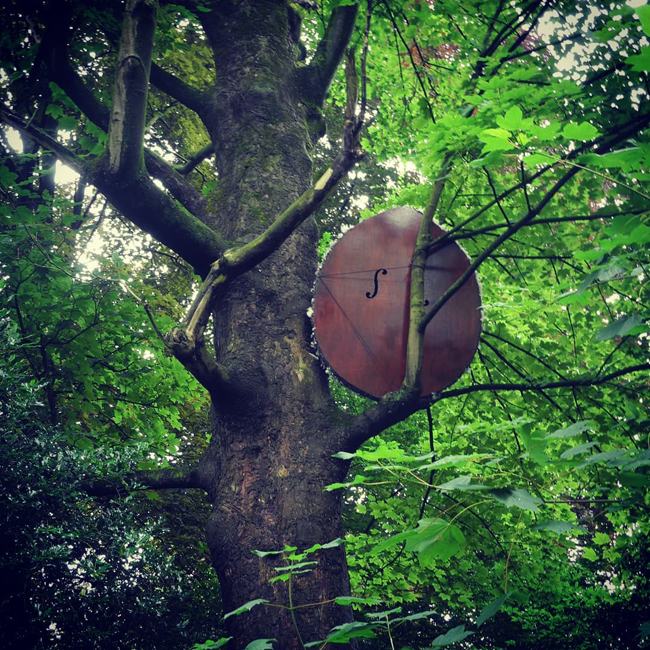
B U Z Z E R ( II ) [ 2 0 0 3 - 2 0 2 3 ] .
In situ installation Exhibition Sporen in het landschap, Moerbeke Belgium 2021. Art Flow Zwolle [NL] 2022.
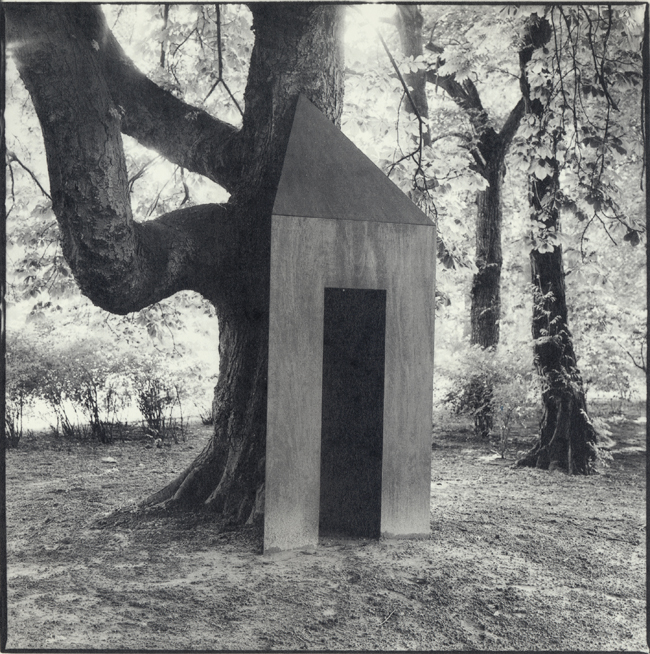
( F ) L U I S T E R H U I S J E [Little House of Whispers] [ 1 9 9 8 ] .
In situ installation [An Ear on the Grass] Park Ter Beuken Lokeren Belgium. Photo: Paul De Malsche
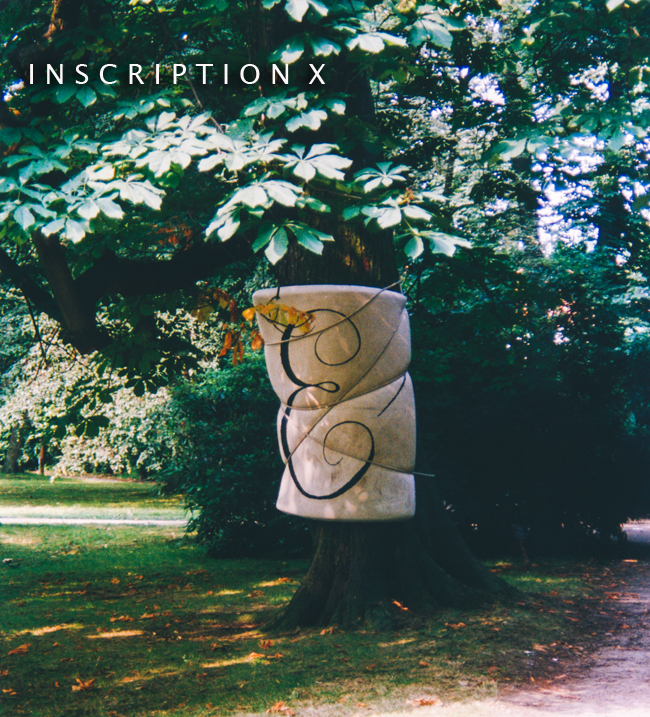
I N S C R I P T I O N X [ 1 9 9 3 ] .
In situ installation Park Blauwendael Waasmunster, Belgium.
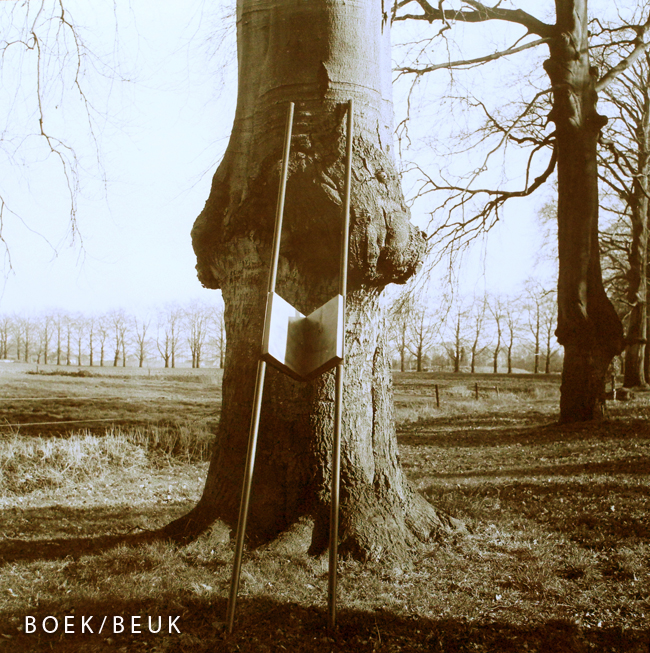
B O O K / B E U K / B O O K / C A R R I E R [ P O R T A B L E V E R S I O N ] [ 1 9 9 3] .
In situ istallation at Hof Ter Saksen Beveren, Belgium.
A T R E E C O N V E R S A T I O N [ 2 0 1 9 ] .
Hof Ter Saksen Beveren Belgium. Sound Walk Sunday September 2019.
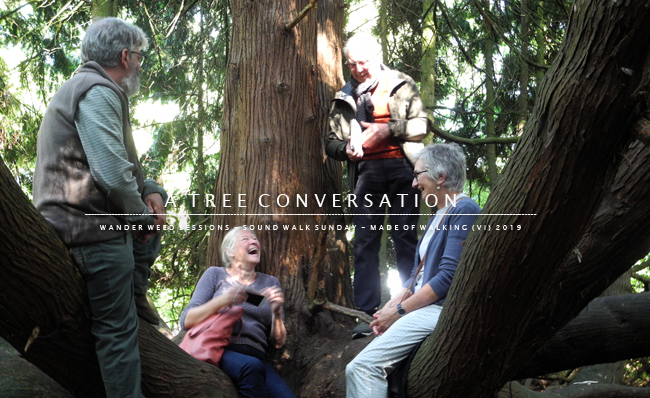
Sound Walk Sunday 2019 took place on Sunday 1st September in the UK [London], as part of a week-long festival of sound walking events and performances beginning on the 1st September, globally celebrating outdoor audio, geo-located, immersive performances, listening walks and sound walks. In the coming months, we will be issuing calls for walking pieces that have been produced since Sound Walk Sunday 2017, and for new work to be premiered on Sound Walk Sunday 2019.
The museum of walks in London is a demanding party for various like-minded artists and walkers to have an artistic [sound] project take place on the same day. For this crossing border project, Stefaan van Biesen and Annemie Mestdagh are doing a Wander Weed session [Plant(e)scape Made of Walking IV Akamas Cyprus 2018, The Walking Body Minho University Guimaraes Portugal 2019], in Beveren Belgium. People are invited to a performative walk that is a mix of a lecture, a conversation and an exercise. The theme of this event is our relationship with plants and plant intelligence.
C H L O R O P H I L I A [ 2 0 1 4 ].
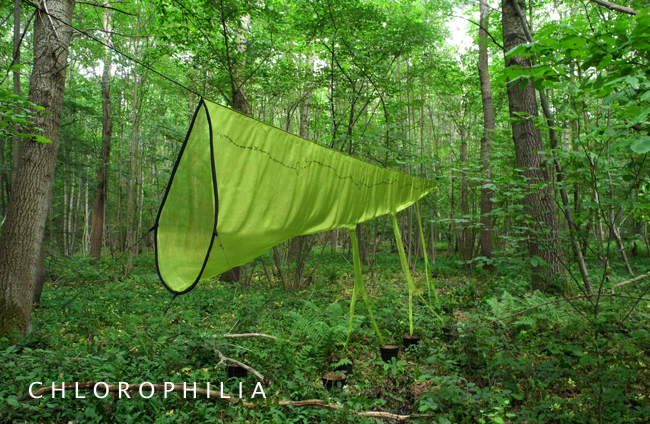
Chlorophilia (Greek: ‘chloros’ pale green + ‘philia’ love), was introduced in 2004 by the journalist Bob Hoss (Cholorophilia - Exploratorium). He referred to a remarkable phenomenon: the physical and sexual attraction that scientists believe to feel for the natural world, specifically for plants and trees. He described it as a form of 'being in love' that expressed itself in, among other things, embracing and hugging trees and in an extreme interest in gardening. An ambivalent emotional attitude that was at odds with the objectivity in research, the rationality that you would expect from scientists.
Hoss made the analysis that the phenomenon Chlorophilia was a passionate force that drove people to see their admiration and attraction as an impulse that leads to change and respect. The increasingly blurred line between culture and the natural world served as a forum to explore how aesthetics and morality were closely related to each other. 'Chlorophilia' became a common denominator for the work of breeders, (ecological) garden communities and researchers, both by artists and experts in a tradition as old as human culture.
In recent decades the dialogue between art and science has become visible again through a social, societal and environmental undercurrent. It has become an exciting encounter between reason and intuition, body and spirit, culture and nature. A cherished utopy of opposites that are not entirely irreconcilable in my world.
Respect for our natural world, wonder as an instrument to a creative process in everyday life, are ingredients for biodiversity in all its aspects. To see ourselves less as consumers, but rather as global citizens. Ecology as a synonym for "caring", a social engagement, a transnational attitude with a compelling question, not in isolation, but standing in the world. Life and art as a silent, tender gesture that doesn't occur unnoticed.
Every action has a meaning for someone, or the 'other'. Deep inside, we do not escape the sprouting, boundless wisdom of biodiversity in which everyone and everything is interconnected. That "even the flight of a butterfly has an effect on the entire planet".
Stefaan van Biesen 2014.
A tree library
A P P E N D I X ( I ) [ 2 0 0 3 ] .
[Tree Library] Beeldig Hof Ter Saksen Beveren 2003 - Biscainhos Museum Braga Portugal 2011.
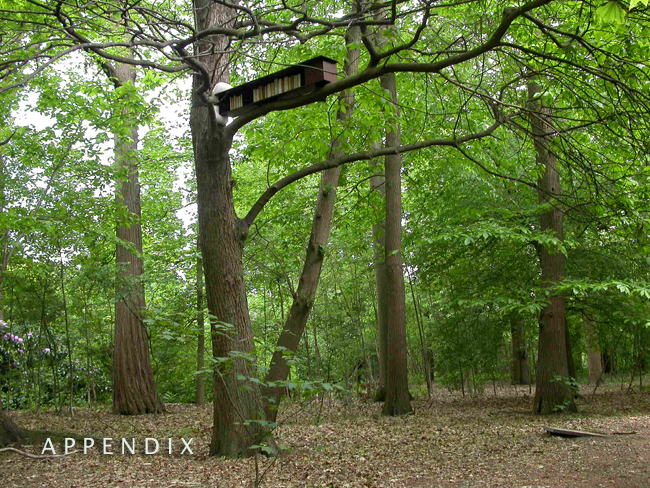
The tree installation of Stefaan Van Biesen, ‘Library’ (‘Appendix’) shows a same sensibility and empathy for the environment in which he is working. To him, the park and nature are no setting. They almost become a medium, a place where man is confronted with incomprehensible phenomena and insoluble questions, but also with his own impotence and insignificance. Doubt and melancholy are never hard to find in Van Biesen’s oeuvre [art critic Paul Geerts].
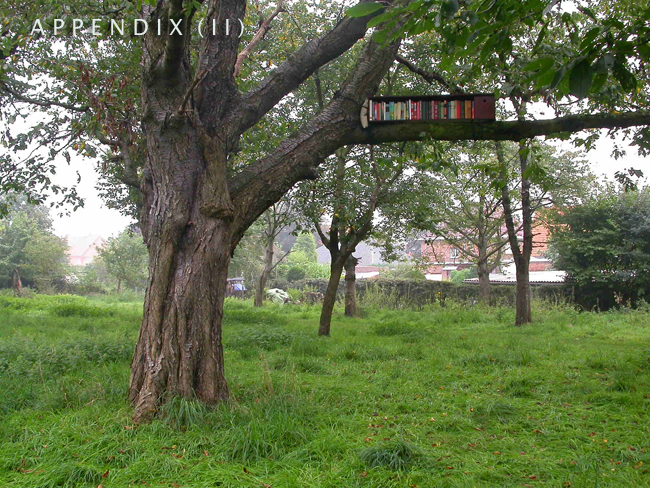
A P P E N D I X ( I I ) [ 2 0 0 5 ] .
Home version tree library/Open Monumentendag Zwijndrecht 2005.
Excerpts from:The figurative library:Imagination and contemporary art in the public library
Bibliotheek- & Archiefgids, nr. 4, August 2003. by Geert Vermeire
Contrary to other cultural forms, art is rarely associated with the library. Although literature became a commonplace in various museums, museums have lost their status of art temples in favour of public houses where the focus is not only on collections but also on imagination, in manifold ways. Museums are beyond conservation. They question themselves and participate in a dialogue with their visitors. Writers and literature in general are invited to collaborate. This article investigates whether libraries experience a similar evolution and explores what contemporary art has the libraries to offer.
Letters to a tree
L E T T E R S T O A T R E E [ 1 9 9 6 > 1 9 9 7 ] .
A correspondence with a chosen tree. Art project 'Buiten Gewoon' CC Heusden-Zolder Belgium.
Stefaan Van Biesen’s Brieven aan een Boom (1996-1997) puts fundamental questions about communication and language into words. Experiencing nature cannot be expressed. Van Biesen’s 38 letters constitute an intimate, vulnerable library, safely put and closed away in a case, a shrine. Only the image remains. What comprises the existence of language then? In these pieces the public is depraved of the certainty of text, they are drawn to themselves with the question ‘Who am I without language? What does a wordless world mean to me?’ The pieces of De Cordier and Van Biesen are libraries of the imagination. They put vulnerable words in a shrine. They take words for butterflies, strong in their flight, fragile in their rest.
As threatened objects, books are omnipresent in contemporary art. Inherent is the representation of the library as a shrine…
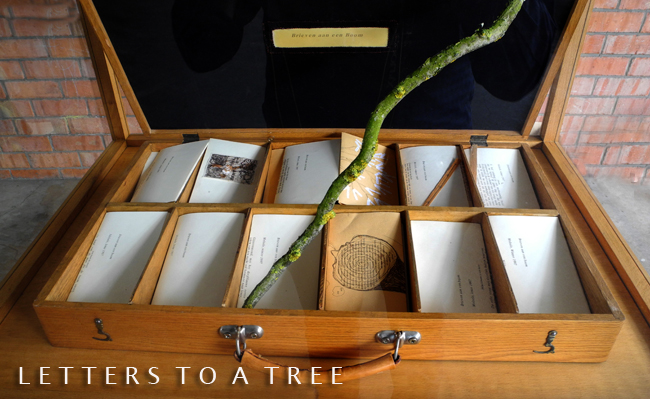
Art and language
Historically, art and language have always been affiliated. Opposing word and image is largely a Western reflex. Word and image are inseparable. Poets, philosophers and painters speak a common language. From the second part of the 20th Century on, Belgium has played a unique part in the ongoing dialogue between art and language. No other country has given the word such dominance in image-, object- and concept art. The pieces of René Magritte, Cobra, Christian Dotremont, Marcel Broodthaers, Jef Geys, Denmark, Fred Eerdekens, Patrick Corillon, Gaston De Mey and many others, exist by grace of the word. The notorious ‘blue bic’-art of Jan Fabre is a variation on the same theme. Contemporary artists like Wim Delvoye, Thierry De Cordier en Stefaan Van Biesen integrate word and image, driven by a hyper individual world experience. Brieven uit Schoorisse (Letters from Schoorisse) and Brieven aan een Boom (Letters to a Tree) evaporate the image, only words remains. The pieces of these artists let us participate in a systematic, incessant doubt. Thierry De Cordier isolates himself in his kitchen garden. Through his writing, reporting a complete recoil, the artist wishes to erase himself. In Brieven uit Schoorisse (1988-1998) only landscapes, silence and absence remain. Writing as revocation.
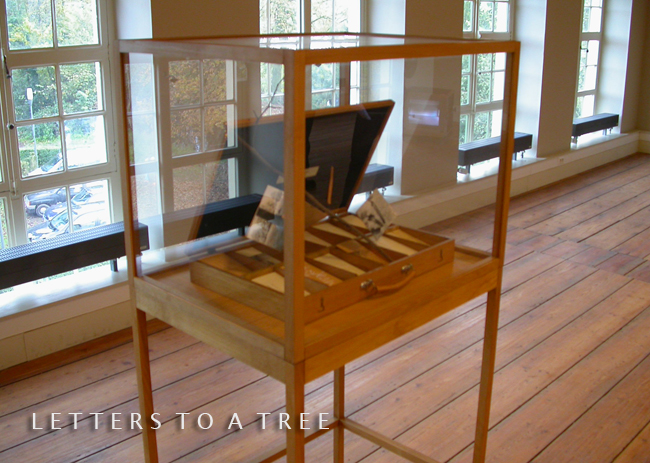
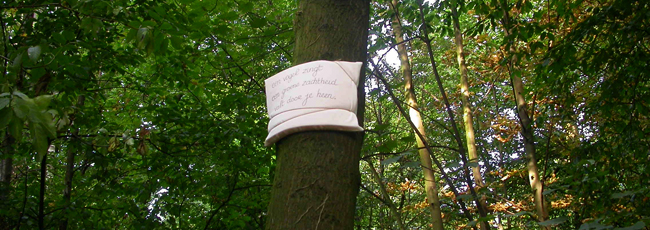
[The Nervated Skin] CC Ter Vesten Beveren Belgium 2006. A project with poet Geert Vermeire.
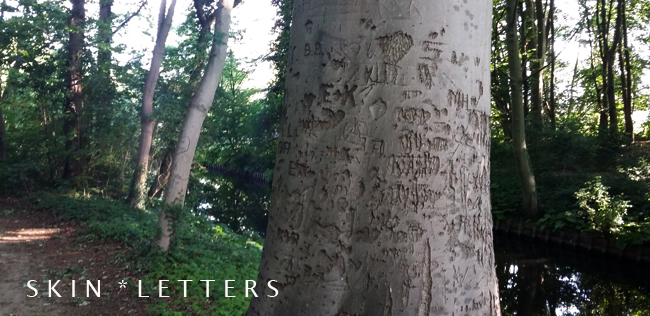
[Skin. Letters on my surface] Cortewalle park Beveren Belgium 1999.
L E T T E R S T O A T R E E > >
A correspondence with a tree during autumn 1996 - spring 1997 for the art project 'Buiten Gewoon' CC Heusden-Zolder Belgium. Curated by Cathy Pelgrims.
[Download pdf English version Letters to a Tree] > >
[Download pdf Nederlandse versie van Brieven aan een boom] > >
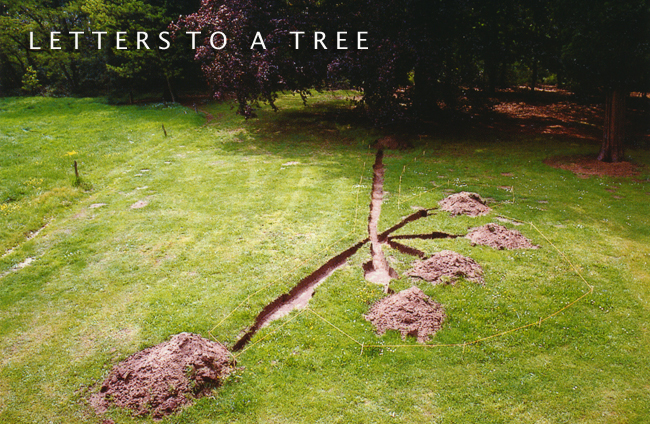
L E T T E R S T O A T R E E [ 1 9 9 7] .
In situ installation & performance during the art exhibition 'Buiten gewoon' CC Heusden-Zolder, Belgium. During the day the 38 letters were read to the tree in the park while my shadow was being dug out every two hours: the body as a sundial.
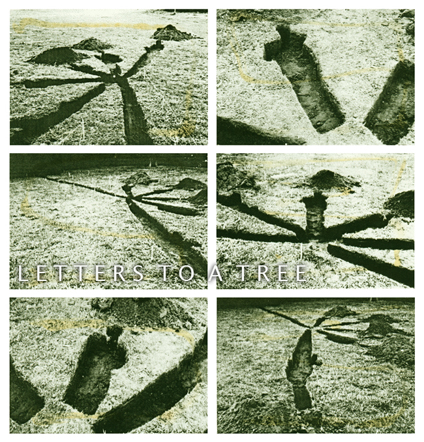
Photographs of the different stadiums of the shadows being dug out.
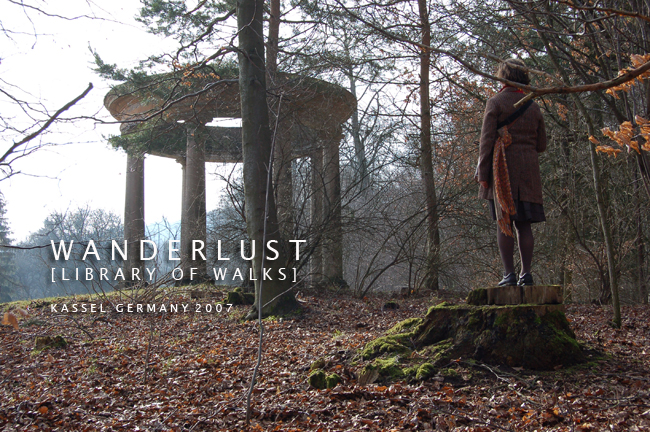
Wilhelmshöhe Kassel Germany 2007. Performance with Annemie Mestdagh & Ingrid Pee.
Letters to an orchard


'Monologue of a plein-airist' Stef Van Bellingen 1997.
In an epistolary novel, the letters are addressed to a fictitious person, who acts as a sounding board for the writer. In this case, the artist has chosen a tree in a park in Heusden-Zolder as the addressee. This tree has become the imaginary mirror of his thoughts. Yet it remains difficult to breach the confidentiality of the mail because the outpourings from the monologue are authentical. For the artist, the tree becomes a canal so that his own thoughts can surface and take shape in words and images. He reaches a sort of inner prospecting, a kind of esthetical prayer wherein he tries to define his place in the reality that surrounds him. During the childhood of the “tree-ful of letters”, more than one hundred growth rings ago, artists really started to observe nature. They didn‟t want to work according to the existing templates, and they started examining the sensation of light in 'plein air'. The subjectivity that comes with looking at nature in progress led to a revolution in Art. The accidental and whimsical play of light made art acquire a sketchy character in the end. Because the emphasis lay on the impression of the environment, the own instinctive looking and the personal viewpoint were accentuated. This is the way in which Stefaan van Biesen looks at the “human aviary” in which we live. To use the words of the artist, he “tries to stand up crippled as wood can be”, but with a certain amount of breathing space, somewhat away from the woods. “Just disagree with me for once”, he asks the tree, but the latter chooses for a deaf camouflage, so that the question is echoed back. In the dying reverberation, you only seem to hear “il faut faire sa propre vie”.

The same place 6 months later

The same place in 2020
![]()
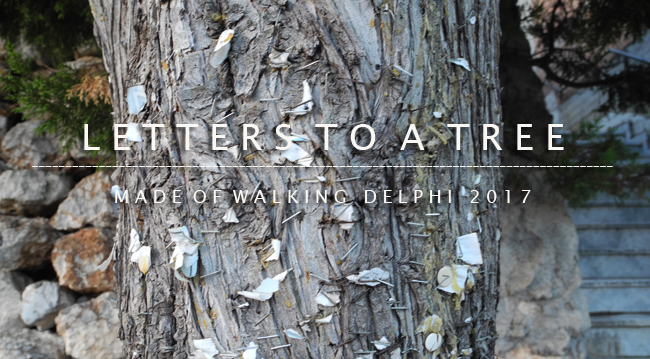
L E T T E R S T O A T R E E [ A L L F A D E D ] [ 2 0 1 7 ] .
[Made of Walking] Delphi Summershool Animart Greece.
![]()
